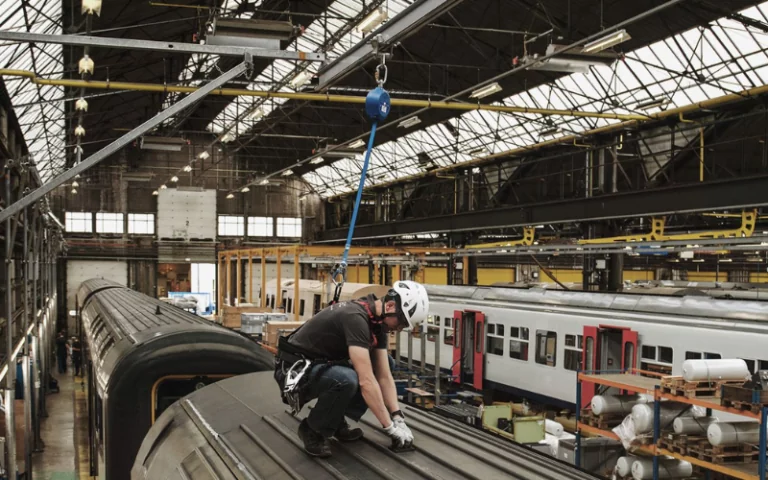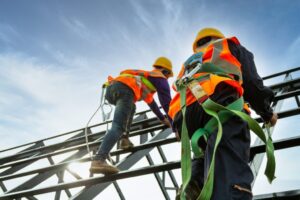Construction sites are among the most hazardous workplaces, particularly in the Philippines where rapid development and high-rise projects are prevalent. Ensuring the safety of workers, especially those working at heights, is a critical concern. One of the most effective safety measures in preventing fall-related accidents is the use of fall arrest lifelines. This blog explores why fall arrest lifelines are essential for construction sites in the Philippines and how they can make a significant difference in protecting workers.
The Risks of Working at Heights
Working at heights is inherently risky, with falls being one of the leading causes of serious injuries and fatalities on construction sites. According to recent statistics, falls from heights account for a significant percentage of construction-related accidents in the Philippines. Common causes include inadequate fall protection, unguarded edges, and improper use of safety equipment. These incidents can result in severe injuries, long-term disabilities, and even fatalities, underscoring the need for effective fall protection systems.
What Are Fall Arrest Lifelines?
Fall arrest lifelines are specialized safety systems designed to prevent and mitigate the impact of falls. They work by arresting the fall of a worker, thereby reducing the risk of serious injury or death. There are several types of fall arrest lifelines, each suited to different applications:
Horizontal Lifelines: These systems are installed between anchor points and allow workers to move horizontally while staying connected. They are ideal for large work areas such as rooftops and construction sites.
Vertical Lifelines: Consisting of ropes or cables with connectors and anchorage points, vertical lifelines provide protection during climbing or descending activities, common in industries like telecommunications and construction.
Overhead Lifelines: Installed above workers, these lifelines provide fall protection for tasks performed directly beneath. They are useful in manufacturing facilities, warehouses, and other overhead work environments.
Rail-Type Lifelines: Manufactured in Europe, these rails comply with EN 795:2012 class D and are made of anodized aluminum alloy, making them resistant to marine environments and electrolytic corrosion.
Benefits of Using Fall Arrest Lifelines
Enhanced Safety: Fall arrest lifelines are crucial for continuous fall protection, significantly reducing the risk of severe injuries and fatalities. They provide a secure connection that prevents workers from falling or minimizes the impact if a fall occurs.
Compliance with Regulations: Using fall arrest systems helps construction sites adhere to safety standards and legal requirements in the Philippines. Compliance not only protects workers but also avoids potential fines and legal issues.
Increased Worker Confidence: Workers who feel safe are more productive and confident in their tasks. By implementing effective fall arrest systems, employers boost morale and ensure a safer working environment.
Versatility: Fall arrest lifelines can be adapted to various construction environments, from horizontal and vertical installations to overhead and rail-type systems. This flexibility ensures comprehensive protection across different tasks and settings.
Specific Applications on Construction Sites
Horizontal Lifelines: Perfect for large-scale projects like rooftop installations or long stretches of scaffolding, horizontal lifelines offer continuous protection as workers move along a specific path.
Vertical Lifelines: Essential for tasks involving climbing or descending, vertical lifelines ensure safety in tasks such as installing equipment on tall structures or working in confined spaces.
Overhead Lifelines: Ideal for manufacturing or assembly line environments where workers move below the lifeline, providing essential protection in overhead work scenarios.
Rail-Type Lifelines: With their robust design and resistance to environmental factors, rail-type lifelines are suitable for challenging conditions and offer reliable fall protection for both arrest and abseiling purposes.
Choosing the Right Fall Arrest Lifeline System
Selecting the appropriate fall arrest lifeline solution in the philippines involves considering factors such as the specific work environment, tasks to be performed, and compliance with local regulations. It’s essential to consult with experts who can recommend and customize systems based on individual project needs. Trusted suppliers and installation services in the Philippines can provide valuable assistance in choosing and implementing the right solutions.
Takeaway
Fall arrest lifelines are indispensable for ensuring safety on construction sites in the Philippines. By providing continuous fall protection, these systems protect workers from severe injuries and fatalities, comply with regulations, and enhance overall safety on-site. Construction site managers and workers should prioritize fall protection by investing in high-quality fall arrest lifelines and consulting with experts to ensure the best safety solutions.




